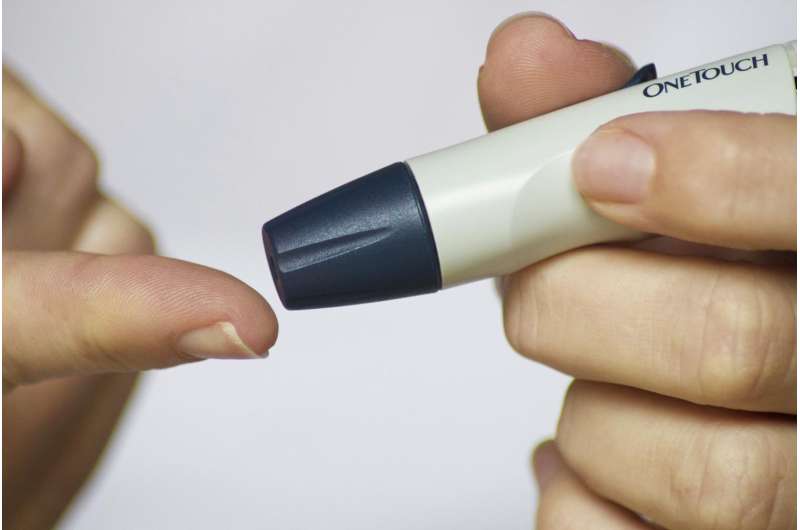Credit: CC0 Public Domain
Researchers at Karolinska Institutet in Sweden have identified a mechanism that can explain the impaired wound healing in diabetes which can lead to diabetic foot ulcers. The study is published in the scientific journal Proceedings of the National Academy of Sciences. In diabetic mice, wound healing improved when the identified signalling pathway was blocked.
Diabetic foot ulcerations are a common complication of diabetes that constitute a major medical, social and economic issue. The lifetime risk of a person with type 1 or type 2 diabetes developing a foot ulcer is around fifteen percent. The treatment options are currently limited due to a poor understanding of the pathogenic mechanisms.
Now researchers at Karolinska Institutet have found a signalling pathway between cells, which plays an important role in the impaired wound healing in diabetes. The findings have been published in the scientific journal PNAS, and hopefully may lead to new treatments of diabetic foot ulcerations.
The identified signalling pathway is called Notch and is activated by interactions between so-called Notch receptors (Notch1-4) and their target molecules on neighbouring cells. This signalling pathway is previously known to be involved in cell differentiation, cell migration and building of new blood vessels.
In this study, the researchers discovered an overactivated Notch1 signalling in skin from patients with diabetes and in skin from mouse models of type 1 and type 2 diabetes. The mechanism was studied through experiments in cultured skin cells. The researchers noted that high glucose levels contributed to the signalling pathway being kept activated.
The study also investigates how the wound healing is affected when this signalling pathway is blocked. This was achieved by applying blocking substances locally on the skin wounds of diabetic mice, and by studying diabetic mice that had been genetically modified in order to block the signalling pathway in their skin.
It was found that local inhibition of Notch1 signalling markedly improved the wound healing in diabetic animals, but not in non-diabetic animals.
"Our results indicate that this is an attractive new target for the treatment of diabetic foot ulcers," says corresponding author Sergiu Catrina, senior lecturer at the Department of Molecular Medicine and Surgery at Karolinska Institutet. "Substances that affect this cellular signalling have already been developed for use in other diseases."
More information: Xiaowei Zheng et al. Triggering of a Dll4–Notch1 loop impairs wound healing in diabetes, Proceedings of the National Academy of Sciences (2019). DOI: 10.1073/pnas.1900351116
Journal information: Proceedings of the National Academy of Sciences
Provided by Karolinska Institutet





















